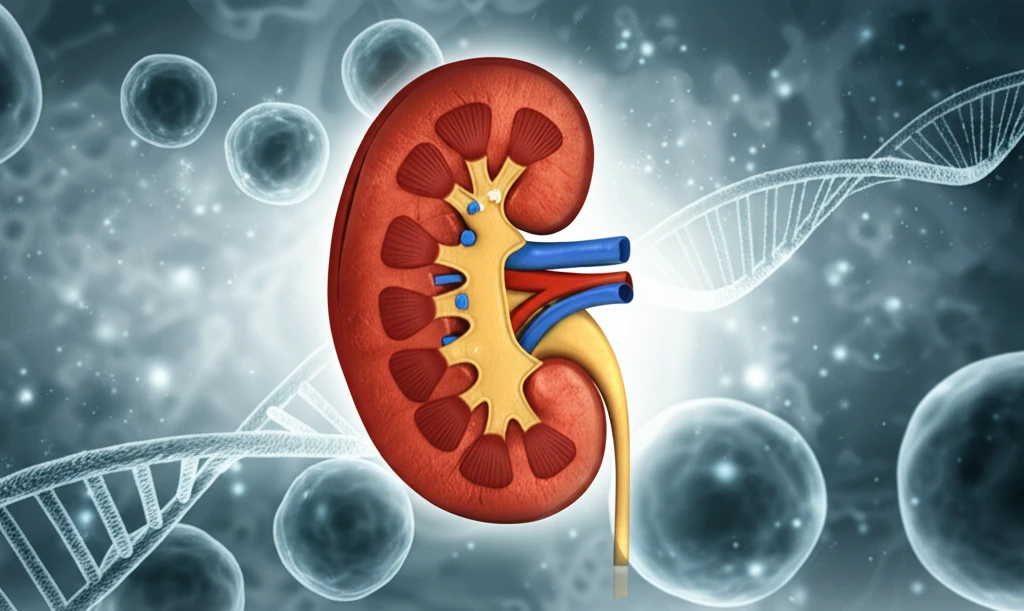
Kidney Health Breakthrough: Can Autophagy Prevent Renal Fibrosis?
"New research explores how autophagy in FOXD1 stroma-derived cells could regulate renal fibrosis, offering hope for novel treatments."
Chronic kidney disease (CKD) affects millions worldwide, often leading to end-stage renal disease and the need for dialysis or kidney transplantation. Renal fibrosis, the scarring of kidney tissue, is a final common pathway in CKD, regardless of the initial cause. Understanding the mechanisms that drive renal fibrosis is crucial for developing effective treatments.
Recent research has highlighted the importance of FOXD1-lineage pericytes, cells that surround blood vessels, in the development of renal fibrosis. These cells can transform into myofibroblasts, which produce the excessive extracellular matrix that characterizes fibrosis. However, the precise regulatory mechanisms controlling this transformation remain unclear.
Autophagy, a cellular process involving the breakdown and recycling of damaged components, has emerged as a key player in maintaining cellular health. In the context of kidney disease, autophagy can protect against injury by removing damaged organelles and proteins. Scientists are now exploring how autophagy in specific kidney cell types, such as FOXD1-lineage cells, may prevent or slow down the progression of renal fibrosis.
How Does Autophagy in FOXD1 Cells Protect the Kidneys?

A new study published in Biochemical and Biophysical Research Communications sheds light on the protective role of autophagy in FOXD1 stroma-derived cells. Researchers investigated what happens when autophagy is disrupted in these cells and how it affects renal fibrosis.
- Disrupting autophagy in FOXD1 cells worsened renal fibrosis after UUO.
- The absence of autophagy increased the accumulation of myofibroblasts, the cells responsible for scarring.
- Peritubular capillary rarefaction, the loss of small blood vessels in the kidney, was accelerated.
- Inflammation, specifically the activation of the NLRP3 inflammasome, was increased, leading to more cell death.
A New Avenue for Kidney Disease Treatment?
This research highlights the potential of targeting autophagy in FOXD1-lineage cells as a therapeutic strategy for renal fibrosis. By finding ways to boost autophagy in these cells, scientists may be able to prevent or slow down the progression of CKD, offering new hope for patients at risk of kidney failure. Further research is needed to determine how these findings can be translated into effective treatments for humans, but this study represents an important step forward in our understanding of kidney disease.
